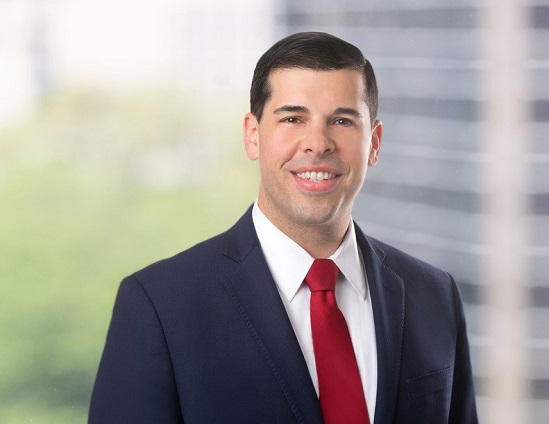By Jesse Panuccio and Simon Leen
The Paycheck Protection Program, a component of the CARES Act intended to provide forgivable loans to small businesses as an incentive to keep workers on the payroll, exhausted its initial $349 billion appropriation on April 16, 2020. Congress recapitalized the program on April 24, 2020, with an additional $310 billion. With the new funding round has come several new rounds of regulatory pronouncements from the SBA. Significantly, the SBA now asserts that, subsumed in a borrower’s certification of necessity, is an “account” of whether the borrower has the “ability to access other sources of liquidity sufficient to support their ongoing operations in a manner that is not significantly detrimental to the business.” This vague standard creates tremendous downstream risk for borrowers and underscores more generally the pitfalls for business of regulation-by-guidance-document. For PPP borrowers, the only certainty is uncertainty.
For lenders, the program still contains significant protection from underwriting risk, but that has not insulated them from lawsuits regarding borrower-selection processes. Nor does it insulate lenders from the risk attendant to resale of PPP loans in the secondary market.
In short, all participants in the PPP looking to manage risk should monitor closely the quickly changing regulatory landscape.
Background
On March 27, 2020, President Trump signed into law the Coronavirus Aid, Relief, and Economic Security Act (CARES Act). Among other avenues of relief, the CARES Act created the Paycheck Protection Program (PPP) and allocated $349 billion to provide largely forgivable loans for small businesses suffering financial distress related to Covid-19. The Small Business Administration, in early April, posted two Interim Final Rules and a Frequently Asked Questions guidance document, which further spelled out the program’s details and requirements. On April 14, the SBA promulgated a third Interim Final Rule, further clarifying the program’s requirements.
Soon thereafter, on April 16, the SBA announced that the PPP had exhausted its funding, with many applicants not having received loans. The PPP, and the financial institutions through which the SBA administers the program, were criticized for lending to publicly traded companies, more than 200 of which have thus far disclosed receiving PPP loans. Treasury Secretary Steven Mnuchin stated on April 21 that the “intent of this money was not for big, public companies that have access to capital.”
On April 24, 2020, President Trump signed into the law the Paycheck Protection Program and Health Care Enhancement Act (“Enhancement Act”). As it pertains to the PPP, the Enhancement Act’s primary purpose is to allocate additional funds to the PPP; it increased funding by $310 billion, to a total of $659 billion. Also on April 24, the SBA promulgated yet another Interim Final Rule, spelling out even more details and requirements for the program.
The SBA has also updated its PPP FAQ guidance document at least nine times since it was first published on April 3, 2020. It now includes a statement which seemingly responds to the criticism over lending to publicly traded companies. The FAQ, in Question 31, published on April 23, 2020, states that, in certifying that “[c]urrent economic uncertainty makes this loan request necessary to support the ongoing operations of the Applicant,” borrowers must take “into account their current business activity and their ability to access other sources of liquidity sufficient to support their ongoing operations in a manner that is not significantly detrimental to the business.” The FAQ indicates that “it is unlikely that a public company with substantial market value and access to capital markets will be able to make the required certification in good faith.” This guidance did not exist during the first round of funding, but it appears the SBA has created a safe harbor for borrowers that already received PPP funds but cannot satisfy the newly announced interpretation. According to the FAQ, the SBA will deem any “borrower that applied for a PPP loan prior to the issuance of this guidance” and that “repays the loan in full by May 7, 2020” to “have made the required certification in good faith.”
Important Considerations for PPP Participants
When we last discussed the PPP on April 14, we cautioned that the nascent program has been characterized by rapidly changing regulatory pronouncements. These evolving regulatory pronouncements create risk because an action seemingly permissible today could be out of bounds tomorrow. Indeed, between April 14 and April 26, the SBA updated its FAQ guidance six times. Compounding the risk from regulatory uncertainty is the significant public scrutiny that the massive stimulus program has attracted: the media is actively investigating participants in the program, Congress is already sending inquiries, and private attorneys are already filing class actions and anticipating future lawsuits. In light of all this, a few considerations—in addition to those we previously noted—are worth emphasizing.
Borrower Risk Created by the New “Ability-to-Access-Liquidity” Certification
The April 23 revision to the FAQ (adding Question 31) creates significant risk for all PPP borrowers. Borrowers must certify that the PPP loan is “necessary to support . . . ongoing operations.” According to the FAQ, that certification is now defined to include an “account” of the borrower’s “ability to access other sources of liquidity sufficient to support their ongoing operations in a manner that is not significantly detrimental to the business.” Certifications like these often form the basis of False Claims Act allegations, and the SBA’s new guidance may be a factor in assessing the materiality of an allegedly false certification of necessity. Accordingly, every potential PPP borrower must consider carefully the downstream risk this new certification creates.
1) Publicly Traded Companies
The FAQ states that “it is unlikely that a public company with substantial market value and access to capital markets will be able to make the required certification in good faith.” And just in case that is not clear enough, the SBA warns that “such a company should be prepared to demonstrate to SBA, upon request, the basis for its certification.” In other words, the SBA is sending a pretty stark message to publicly traded companies: do not apply, and if you do, close scrutiny and enforcement actions are likely. For those publicly traded companies that borrowed PPP funds prior to the issuance of this guidance, the SBA warns that they have until May 7, 2020, to “repay[] the loan in full.”
2) Businesses Backed by Private Equity
Businesses backed by private equity and venture capital should pay close attention to the Interim Final Rule published on April 24, which cryptically states that although “affiliation rules apply to private equity-owned businesses in the same manner as any other business subject to outside ownership or control,” “all borrowers should carefully review the required certification . . . stating that ‘[c]urrent economic uncertainty makes this loan request necessary to support the ongoing operations of the Applicant.’” Combining this pronouncement with the SBA’s statement in Question 31 of the FAQ guidance document seems like a not-too-subtle-hint that PE-funded companies may be the next group of borrowers struck by the PPP’s regulatory boomerang. Accordingly, PE-backed businesses should proceed with caution before choosing to apply for a PPP loan.
3) All Businesses
It is not only publicly traded and PE-backed companies that face significant risk under the SBA’s most recent PPP pronouncements. Businesses with good credit, businesses with longstanding lending relationships, businesses with access to alternative sources of capital—really all businesses—need to consider carefully what the standard outlined in FAQ 31 means for their unique circumstances. The standard—a borrower’s “ability to access other sources of liquidity sufficient to support their ongoing operations in a manner that is not significantly detrimental to the business”—is so vague that it raises more questions than it answers. For example:
- What constitutes “taking into account” the “ability to access other sources of liquidity”? Must the borrower, seeking this emergency funding, first affirmatively test other sources of liquidity? If so, how many and with what level of formality?
- Which “other sources of liquidity” will be considered? Is “access to capital markets” the only relevant alternative source or must other funding options also be considered? Must other lending be considered and, if so, what kind of lending? Is it enough to test local lenders or must the borrower also try out-of-market lenders? If the borrower must seek liquidity from investors, must it only look at existing investors, or also seek new investors? Must the borrower also consider business changes that would increase liquidity, such as asset sales, price increases, or cost reductions? What about a founder-run business? If the founder has personal wealth, must he or she consider that a relevant “source[] of other liquidity”?
- What constitutes “significant detriment to the business”? If alternative sources of liquidity would take significantly longer to obtain, or be significantly more costly, than PPP borrowing, would that be significantly detrimental? Is selling off additional equity stakes in the business significantly detrimental?
If all that uncertainty were not enough, there is also the question of whether the FAQ, including FAQ 31, is binding at all, at least from a government-enforcement perspective. According to the Justice Manual—the Department of Justice’s internal policy compilation—“[c]riminal and civil enforcement actions brought by the Department must be based on violations of applicable legal requirements, not mere noncompliance with guidance documents issued by federal agencies, because guidance documents cannot by themselves create binding requirements that do not already exist by statute or regulation.” On the other hand, this policy is relatively new—adopted as a codification of the “Brand Memo” during the Trump administration—and could easily be altered under a new administration.
In sum, in light of the SBA’s latest regulatory pronouncements, the only certainty for PPP borrowers now is uncertainty. They face the prospect of certifying compliance with a vague, subjective standard and all the downstream enforcement risk that comes with it. More concrete answers may come, unfortunately, only when audits, enforcement actions, and private litigation start rolling in.
Lender Risk
In our prior discussion of the PPP, we noted that “it is clear that the federal government is attempting to limit potential lender liability to encourage expedited lending.” The SBA’s updated FAQ continues that trend, stating in Question 31 that lenders may “rely on a borrower’s certification regarding the necessity of the loan request.” In other words, though borrowers now face great uncertainty about the meaning of that certification, lenders seemingly have significantly less risk from failing to perform extensive due diligence concerning that certification.
That said, lender risk is still a factor to consider, especially because of the scrutiny on the program. Several lawsuits have already been filed against lenders, alleging that they illegally prioritized PPP loan applications from larger borrowers to maximize origination fees. And a federal court recently denied a preliminary injunction motion seeking to prevent lenders from imposing restrictions on borrowing beyond those explicitly provided for in the PPP.
Moreover, the updated FAQ also underscores an area of lender risk we previously noted—resale of PPP loans. Question 30, added on April 17, specifies that a “PPP loan may be sold into the secondary market at any time after the loan is fully dispersed” and such a sale does not require SBA approval. Notably, unlike the regulatory forbearances for underwriting and loan forgiveness contained in the PPP IFRs, Question 30 offers no guidance or assurances for actions taken with respect to resale. Accordingly, as we previously warned, lenders could face FIRREA or False Claims Act liability for “misrepresentations regarding the quality or underwriting of the loan pool.” Given that most PPP lenders will engage in truncated due diligence, lenders may want to consider explicit disclaimers for any sale in the secondary market.

